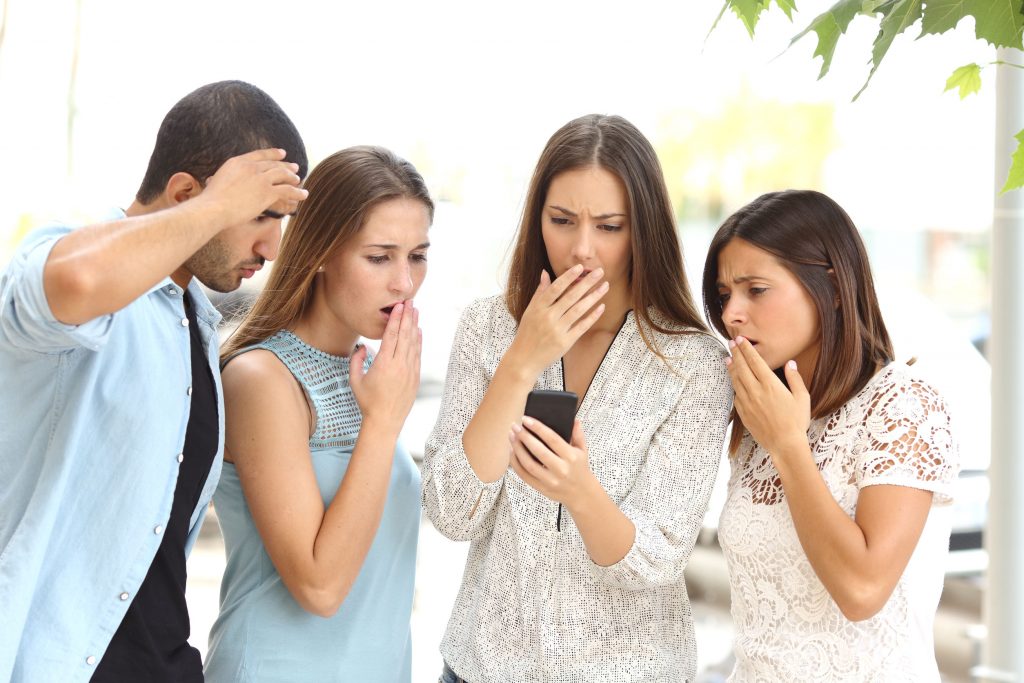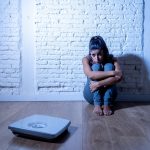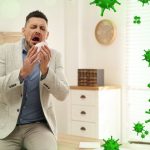Naturopathic Perspective
Shelley Burns, ND
It was on Facebook that I was first introduced to the Tide Pod Challenge, ie, the public dare to bite into Tide’s single-load laundry detergent packets. With all of the social media scandals of late, I ignored this post, believing it was fake news or a bad joke. There was something, however, that drew me to this issue – an uneasiness – so I decided to investigate the Tide Pod Challenge further. To my disbelief, I quickly realized this challenge was real and that our youth were and still are taking this challenge.
The Teenage Brain
There are a number of questions that arise regarding the Tide Pod Challenge. The first question is: why? Why would a teen decide to take the challenge and ingest a Tide Pod while knowing quite well the potential negative health effects of doing so? The second question is: do we allow social media to continue to threaten the health of our youth? How can we change the tune of social media? How do we reframe social media to send positive messages as opposed to messages of negative influence and bullying? Lastly, what is our role as naturopathic doctors when working with our youth?
Kelly Schwartz, an associate professor in applied child psychology at the University of Calgary, was interviewed by CBC News and asked why teenagers would take the Tide Pod Challenge.1 In the article Mr Schwartz expresses his frustration with the challenge, adding, “One of the unique [aspects] of this [Tide pod challenge] is that an audience of 10 has now become an audience of 1000.”
Schwartz goes on to mention scientists’ long-held theory that “the brain stop[s] developing by late adolescence.” He indicates that the research now shows that “the brain continues to develop well into the twenties, particularly the part of the brain that is what we call executive functioning, so decision-making, self-regulation.”1
Claire McCarthy, MD, explains, “Adolescence is a crucial moment in life, the transition between childhood and adulthood. The brains of adolescents reflect that transition. They have the ability to take in a lot of information, to learn quickly, that children have — and their brains are beginning to build the connections that adults have, the connections that make different parts of the brain work together more quickly and effectively. The last part of the brain to build those connections is the frontal lobe. This is important, because the frontal lobe is the part of the brain that controls insight and judgment, the part that controls risk-taking behaviors.”2
Schwartz noted the teenage brain can still rationalize.1 It can still infer that eating a Tide pod is not a good idea; however, the “sensation seeking” part of the brain often wins the battle. He goes on to explain that teenagers “want newness and novelty.” This part of the brain takes over when teenagers realize they can get “likes” on Facebook, that they can get a rise out of their peers.
Teenagers are capable of making appropriate decisions and choices. “Compared to adults, they perform similarly,” says Schwartz. However, it is not the consequence of the decision that is important in the teenage mind; it is the surge in recognition. As Schwartz identifies, “they got that notice that they wouldn’t have got had they not.”
The Lure of the “Like”
Is it really all about the “like” on social media that drives so many of the behaviors of our youth? Sadly, it seems to be. The American Association of Poison Control Centers reported a total of 86 intentional ingestions of single-load laundry packets among 13 to 19-year-olds between January 1 and 21, 2018.3
Before the advent of social media, teenagers still took risks; however, the outreach was confined to a group of friends. The concern regarding social media is that it allows for a larger bandwidth of individuals influencing teenagers to take risks. Dr McCarthy points out, “With social media, today’s teens have potentially millions of people watching and egging them on, mostly people they didn’t choose, who are not there in person — and who have zero interest in their well-being. It’s “I dare you” in proportions we can’t measure or imagine, played out in the latest “challenge” (there have been plenty of them) and broadcast via their ever-present phones.”2
Even though there has been a recent social media crisis and Facebook has been demonized, social media is going nowhere soon. In fact, I believe it will continue to be a major influence on how we live our daily lives. This is why it is so important to educate and guide our teenagers on how to navigate social media.
Educating Our Teen Patients
Risk-taking is not the issue, as it is healthy to take risks; it is healthy to challenge oneself to try new ideas and to push oneself past their comfort zone. However, risk-taking on social media becomes an issue when, as Dr McCarthy indicates, our teenagers are challenged by individuals who do not have a vested interest in their well-being. This is when we require ambassadors – individuals who are influencers, individuals who are willing to put forth positive messages on social media. We need individuals who are not afraid to challenge the negativity on social media, individuals who will challenge the status quo.
We also need to spend more time with our teenagers – to educate them on the pros and cons of social media, to educate them on the benefits of being connected but also on the importance of choosing our friends wisely. It comes down to being safe. When we can convince our teenagers to be safe, we have turned social media into a platform of positive sharing and encouragement rather than one of fear-mongering or endangerment.
Wendy Haaf suggests, in Today’s Parent, “Don’t assume your kid is too smart or responsible to fall prey to temptation.” She goes on to quote Ann Douglas, author of several parenting books, as saying “The biggest thing as a parent is to remind yourself that the brain you live in is not quite the same as the brain your teenager lives in.”4
As naturopathic doctors, we also play a role in ensuring that the teenagers we see in our offices are safe and educated around social media. We can take on the role of ambassador.
As we do our initial intake with teenagers, we know it is important to gather information regarding their physical being, ie, the classic questions regarding digestion, diet, musculoskeletal, etc. It is also imperative that we not overlook our teen patients’ mental/emotional and psychosocial being.
Ask questions about sleep, relationships, school, and home environment. Sometimes a teenager’s headache may not be due to hormonal fluctuations or musculoskeletal issues, but instead is due to being overwhelmed by their experience on social media. It may be due to feeling unsafe or being bullied.
Remember, as naturopathic doctors we are looking at the individual person and all aspects of health, as well as potential barriers to healing. As crazy as it sounds, social media can be viewed as a barrier to health among our teenagers!
References:
- Hunt S. Tide pod challenge: teen brains wired for risk, U of C prof says. January 18, 2018. Canadian Broadcasting Corporation (CBC) Web site. http://www.cbc.ca/news/canada/calgary/tide-pod-challenge-teenage-brains-1.4493609. Accessed April 1, 2018.
- McCarthy C. Why Teenagers Eat Tide Pods. January 30, 2018. Harvard Health Publishing. Available at: https://www.health.harvard.edu/blog/why-teenagers-eat-tide-pods-2018013013241. Accessed April 1, 2018.
- American Association of Poison Control Centers. High Alert: Intentional Exposures Among Teens to Single-Load Laundry Packets Continue to Rise. January 22, 2018. AAPCC Web site. http://www.aapcc.org/press/84/. Accessed April 1, 2018.
- Haaf W. Today’s Parent. Why do kids think the Tide Pod Challenge is such a hot idea? January 24, 2018. Today’s Parent Web site. https://www.todaysparent.com/kids/tween-and-teen/why-do-kids-think-the-tidepodchallenge-is-such-a-hot-idea/. Accessed April 1, 2018.
Image Copyright: <a href=’https://www.123rf.com/profile_antonioguillem’>antonioguillem / 123RF Stock Photo</a>
 Shelley Burns, ND, is a licensed naturopathic doctor working in a multi-disciplinary environment at Lawrence Park Osteopathy in Toronto. With a special interest in executive health medicine, she has worked alongside physicians consulting as a team. Dr Burns supervises at the Robert Schad Naturopathic Clinic (RSNC). During her tenure at the RSNC, she has had the honor of mentoring many naturopathic interns. Dr Burns has been a columnist for the US magazine, Skin Deep, and has been quoted in Maclean’s Magazine, the Toronto Star, and The Medical Post. She has also appeared in interviews on CTV.
Shelley Burns, ND, is a licensed naturopathic doctor working in a multi-disciplinary environment at Lawrence Park Osteopathy in Toronto. With a special interest in executive health medicine, she has worked alongside physicians consulting as a team. Dr Burns supervises at the Robert Schad Naturopathic Clinic (RSNC). During her tenure at the RSNC, she has had the honor of mentoring many naturopathic interns. Dr Burns has been a columnist for the US magazine, Skin Deep, and has been quoted in Maclean’s Magazine, the Toronto Star, and The Medical Post. She has also appeared in interviews on CTV.





